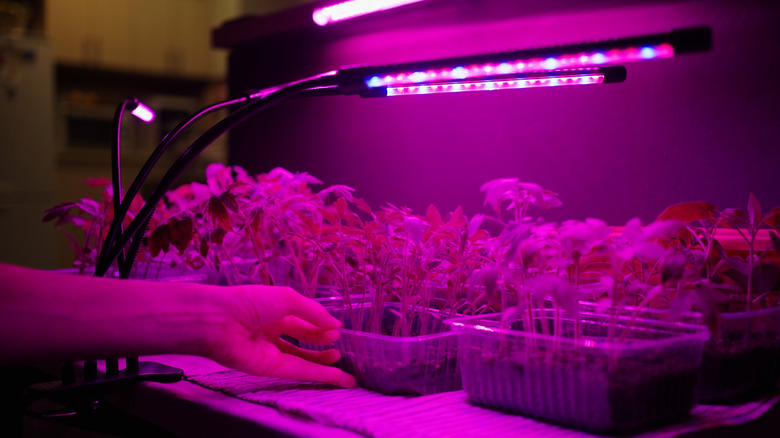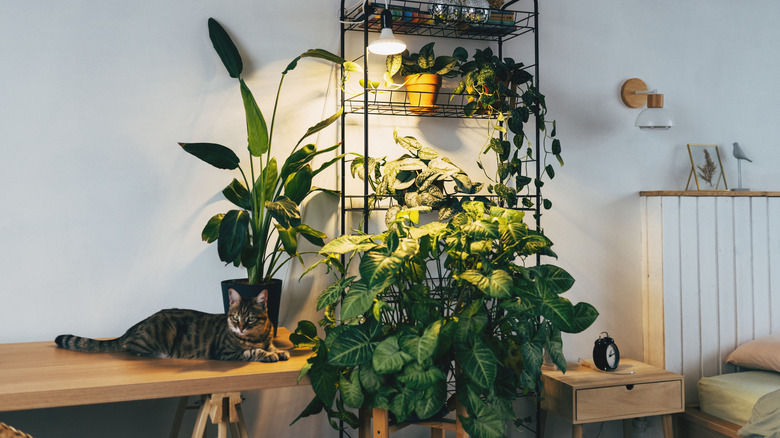What Makes Grow Lights Different From Traditional Bulbs?
We may receive a commission on purchases made from links.
The benefits of starting seeds instead of buying plants are hard to beat, but they only pay off if you're giving those seeds the right light from the start. And let's face it — not all light is created equal, especially when choosing what kind of light to use to help your seedlings grow. You might think that a sunny windowsill or a regular lamp is good enough to get your seeds to sprout. But this is a big mistake when starting seeds: relying on household bulbs instead of using proper grow lights that plants actually need. Regular light bulbs emit light that leans more towards one end of the spectrum or the other. Whereas plants need more optimized light from the blue, green, and red parts of the spectrum in order to photosynthesize, which is vital for a young plant's growth.
Many grow lights not only provide the proper wavelength of light for a plant, but can also be customized, through settings, to change as the plant's needs change. For instance, you can set the light to the blue/violet end of the spectrum to promote the early stages of growth and photosynthesis. As the plant grows, you can then adjust it to add red/orange light to promote flowering and fruit set. That's why the best way to start seeds indoors is by using a grow light that mimics the natural sunlight spectrum, and traditional bulbs, even LEDs, just don't have the capability to do this. To grow strong, healthy seedlings, you will want a full spectrum grow light within the 5000 to 6500 kelvin range.
How to choose the right grow light for your indoor garden
When it comes to indoor gardening, the right lighting is everything, especially if you're starting from seeds. But with all of the different options available, how do you choose which one is right for you? Start by considering what you are growing: if you are growing mostly seedlings or leafy greens, choose a light with a stronger blue spectrum, this will promote healthy leaves and roots. If you are growing mostly flowering or fruiting plants, you should lean more towards a light with a stronger red wavelength.
A great compromise would be to get a grow light that has a broad spectrum and simulates natural light as closely as possible; a great option is the Sunco LED Full Spectrum Grow Light. Make sure to check the light's coverage area and brightness (often listed as PAR), and ensure it meets the needs of the space you are growing in. You will want to place your LED grow lights at least 12 to 24 inches above your plants. As your plants grow, continue to maintain this height until you are ready to transplant.

